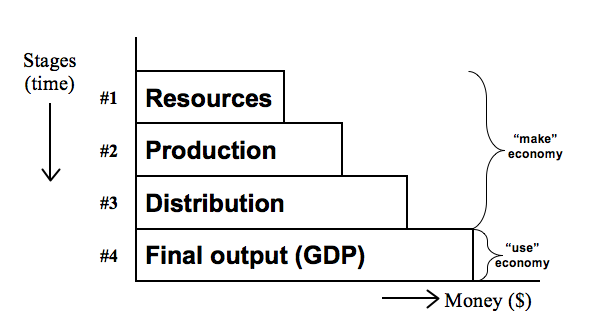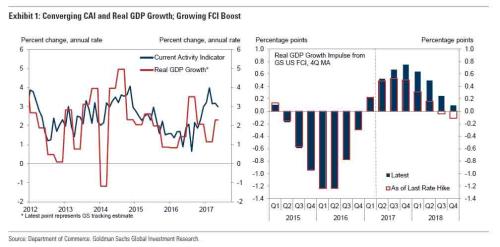Several thoughts pirouetted across my mind as I watched the coverage of Saturday’s protest and riots.
I wondered why anti-capitalists were wearing clothing with prominent labels (don’t they know their Naomi Klein?); I wondered why defenders of the public sector were attacking publicly owned banks; I wondered how one protester could say, when interviewed, “Of course, we all know there need to be cuts” while a sea of people drifted past her waving signs saying ‘No cuts’; I wondered why Ed Miliband, a bloke without an alternative, was addressing the March for an Alternative.
But most of all I was struck by what a boon this all was for the economy, or so some would tell you. The standard Keynesian narrative of the Depression of the 1930’s, for example, holds that it was all about a collapse in aggregate demand which was only solved by, first, New Deal spending, and then war spending. As Paul Krugman once put it
Faced with the Depression, institutional economics turned out to have very little to offer, except to say that it was a complex phenomenon with deep historical roots, and surely there was no easy answer. Meanwhile, model-oriented economists turned quickly to Keynes — who was very much a builder of little models. And what they said was, “This is a failure of effective demand. You can cure it by pushing this button.” The fiscal expansion of World War II, although not intended as a Keynesian policy, proved them right
The fact that large swathes of the planet’s human and physical capital was blown to atoms represented simply an ‘opportunity for growth’.
So surely all the random destruction in the West End should be a good thing? Perhaps not. Back in 1850, Frédéric Bastiat asked “Have you ever witnessed the anger of the good shopkeeper, James B., when his careless son happened to break a square of glass?” In his classic, Economics In One Lesson, Henry Hazlitt took up the story
A young hoodlum, say, heaves a brick through the window of a baker’s shop. The shopkeeper runs out furious, but the boy is gone. A crowd gathers, and begins to stare with quiet satisfaction at the gaping hole in the window and the shattered glass over the bread and pies. After a while the crowd feels the need for philosophic reflection. And several of its members are almost certain to remind each other or the baker that, after all, the misfortune has its bright side. It will make business for some glazier. As they begin to think of this they elaborate upon it. How much does a new plate glass window cost? Fifty dollars? That will be quite a sum. After all, if windows were never broken, what would happen to the glass business? Then, of course, the thing is endless. The glazier will have $50 more to spend with other merchants, and these in turn will have $50 more to spend with still other merchants, and so ad infinitum. The smashed window will go on providing money and employment in ever-widening circles. The logical conclusion from all this would be, if the crowd drew it, that the little hoodlum who threw the brick, far from being a public menace, was a public benefactor.
Now let us take another look. The crowd is at least right in its first conclusion. This little act of vandalism will in the first instance mean more business for some glazier. The glazier will be no more unhappy to learn of the incident than an undertaker to learn of a death. But the shopkeeper will be out $50 that he was planning to spend for a new suit. Because he has had to replace a window, he will have to go without the suit (or some equivalent need or luxury). Instead of having a window and $50 he now has merely a window. Or, as he was planning to buy the suit that very afternoon, instead of having both a window and a suit he must be content with the window and no suit. If we think of him as a part of the community, the community has lost a new suit that might otherwise have come into being, and is just that much poorer.
The glazier’s gain of business, in short, is merely the tailor’s loss of business. No new “employment” has been added. The people in the crowd were thinking only of two parties to the transaction, the baker and the glazier. They had forgotten the potential third party involved, the tailor. They forgot him precisely because he will not now enter the scene. They will see the new window in the next day or two. They will never see the extra suit, precisely because it will never be made. They see only what is immediately visible to the eye.
The resilience of palpable nonsense is staggering. If, as Bastiat and Hazlitt demonstrate, the idea that the trashing of businesses is good for business, then consider what Clinton-era Treasury Secretary Larry Summers said about the Japanese earthquake recently
It may lead to some temporary increments ironically to GDP as a process of rebuilding takes place. In the wake of the earlier Kobe earthquake Japan actually gained some economic strength
This is crass rubbish. Lots of new building activity may take place in Japan but they will simply be restocking on, say, housing. Rebuilding the house you have just watched destroyed does not make you better off.
Yet this drivel has the imprimatur of The Master himself who wrote in The General Theory
Pyramid-building, earthquakes, even wars may serve to increase wealth
That will no doubt come as a great comfort to West End workers and homeless Japanese.
Related Articles




I like John Phelan’s witty 2nd paragraph. However I totally reject his criticism of Keynes at the end of the article. Keynes here is making the point that given excess unemployment, ANY form of stimulus, even if it is directed at totally pointless activities, will increase real incomes because those employed on the pointless activities will themselves spend their increased incomes – on more useful products.
Put another way, the obviously futile INITIAL activity (wars, etc) do not increase real GDP, but the SECONDARY activities WILL.
Another activity Keynes used to illustrate the point was having the unemployed dig holes in the ground and fill them up all day long. Amazing as it may seem, Keynes (like the average six year old) was aware that it is not too difficult to find more constructive ways to expend resources.
Mr. Musgrave,
“even if directed at totally pointless activities will increase real incomes…”
Nay, it will increase false incomes, malinvestment and overinvestment, and extend the false economies. Your excess employment is handled naturally, if left alone, by falling prices of everything, to a natural sustainable level. Although in such a scenario many are experiencing condign punishment for their actions during the boom, social cohesion is assured since everyone is able to find work at wages that can afford the prices of things falling around the worker.
Keynes is popular because his arguments favor those who would be in power, it complements their conceits. We had a recovery after WWII because the excess production capacity from the roaring 20’s was levelled, and there was no way but up. There is an alternative to war, and that is let the markets sort it out, freely. As we continue QE-X, we strive inexorably toward general war.
I made much the same observation (under the moniker “erikbloodaxe”) on this economically illiterate article by the Telegraph’s Jeremy Warner:
http://blogs.telegraph.co.uk/finance/jeremywarner/100009766/japan-will-bounce-back-from-this-terrible-disaster/#dsq-content
“Perhaps the Japanese government should destroy another city and its hinterland (after having evacuated it of course). Think of all the jobs!”